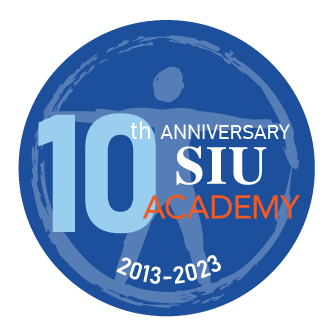Management of Locally Advanced Renal Cell Carcinoma
Abstract
Renal cell carcinoma (RCC) has a natural tendency to invade the venous system with formation of a venous tumor
thrombus in the renal vein, which can extend proximally into the inferior vena cava (IVC) and in some cases into
the right atrium. The presence of venous involvement significantly worsens prognosis. Despite recent advances in
systemic therapies, surgery remains the most effective method of treatment and in the case of complete removal
of all tumor, it provides satisfactory long-term survival and must be attempted whenever possible. Several surgical
techniques have been proposed, but all are associated with a high rate of perioperative complications and mortality.
Minimally invasive approaches are mainly applicable for less extended IVC thrombi, while open surgery remains the
gold standard for this category of patients. Most IVC thrombi can be managed without use of circulatory support
by using different methods of IVC control depending on the thrombus level. However, use of cardiac bypass with or
without deep hypothermic cardiac arrest is indicated in some patients with bulky intraatrial tumor thombi. In select
patients presenting with IVC tumor thrombus and synchronous distant metastases, cytoreductive nephrectomy with
IVC tumor thrombectomy may be considered with or without neoadjuvant systemic therapy. Surgery for RCC with
venous thrombus is complex and requires experienced multidisciplinary surgical, anesthesia, and critical care teams
at high-volume centers to achieve the best outcomes.
The Société International d'Urologie (SIU), which owns and publishes the Société International d'Urologie Journal (SIUJ), does not require authors of papers published in the journal to transfer copyright. Instead, we ask authors to grant an exclusive licence that allows us to publish the article in SIUJ (and any derivative or related products or publications) and that allows us to sub-license such rights and exploit all subsidiary rights.
Authors retain the right to use their own articles for their own non-commercial purposes without seeking explicit permission from SIU.
The SIUJ publication licence expressly defines “non-commercial” as “not primarily intended for or directed towards commercial advantage or monetary compensation.” Although no activity is completely disconnected from commercial activity, the following are generally considered to be non-commercial uses:
- Reproduction of a reasonable number (no more than 100) of print copies of the published paper for personal use (e.g., sharing with colleagues, including in grant applications).
- Posting a copy of the published version of the paper on the author’s own or their institution’s website. The article must be accompanied by this statement: ‘This article has been published in the SIUJ: [full citation; link]’.
- Inclusion of the paper in a course pack, with a maximum of 100 copies to be used in the author’s institution. The copies must include the following acknowledgement: ‘This article has been published in the SIUJ: [full citation; link].’
As the distinction between commercial and non-commercial is not always clear, authors are strongly advised to seek permission from SIU for any use that may be considered to have a commercial aspect.
We ask the corresponding author to read the terms of the licence and then to grant this exclusive licence on behalf of all authors by indicating agreement to the following statement:
The corresponding author has the right to grant on behalf of all authors and does grant on behalf of all authors, an exclusive licence on a worldwide basis to the SIU and its licensees to permit this article (if accepted) to be published in the SIUJ and any other SIU products and publications and to exploit all subsidiary rights, as set out in our licence agreement.
Review and Decision
Most submissions will be reviewed by a senior editor within 2 weeks. Many manuscripts will be rejected at this point for a variety of reasons, including subject matter outside the scope of the SIUJ, flawed design, discredited or outdated methodology, poor organization or presentation, failure to conform to ethical requirements, and apparent plagiarism.The remaining manuscripts will be sent for peer review. The SIUJ uses a single-blind process: reviewers know the identity of the authors, but the authors are not told who has reviewed their manuscript, and SIUJ ensures that potentially identifying information is removed from comments sent to them. Reviewers are asked to make their recommendations within 10 days, after which a senior/specialist editor will consider their comments and recommend provisional acceptance dependent on satisfactory revision, acceptance without revision, or rejection. Authors should receive a final decision within 4 to 6 weeks of submission.











